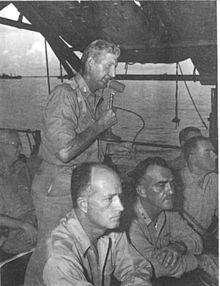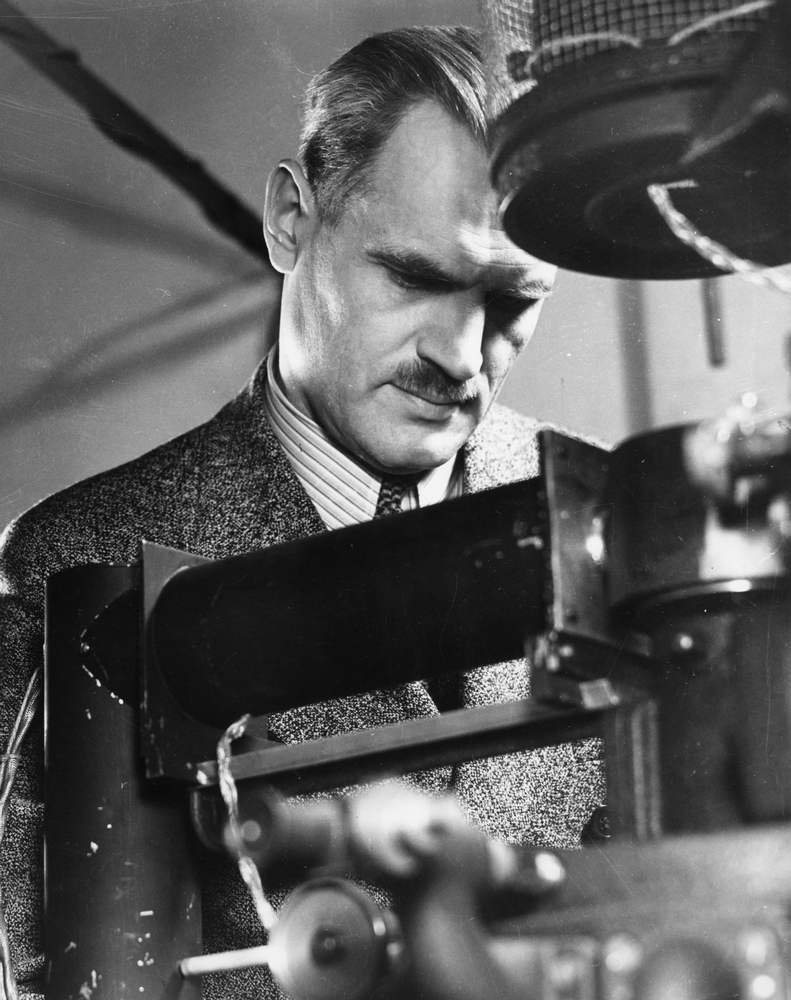The first concerted effort to understand and study the effects of radiation on humans began at the Metallurgical Laboratory at the University of Chicago in the spring of 1942, nearly six months before the Manhattan Project was officially approved. The director of the Met Lab at this stage, Arthur H. Compton (pictured; image courtesy of the University of Chicago Photographic Archive, apf1-01881, Special Collections Research Center, University of Chicago Library), recalled that the real impetus behind the program came from the physicists themselves: “Our physicists became worried. They knew what happened to the early experimenters with radioactive materials. Not many of them had lived very long. They were themselves to work with materials millions of times more active than those of early experimenters. What was their own life expectancy?”
Many of the physicists who were working at the Met Lab knew about early European researchers who had been injured or died as a result of their scientific labors, particularly those who had worked with x-rays and radium. In addition, the National Bureau of Standards published a handbook in 1941 that described a wide variety of radiation exposures that were linked to cancer, including handling of radioactive materials, bombardment by proximity to materials, breathing of dusts, and ingestion of the elements by mouth or by skin contact. Many of the scientists in Chicago were exposed to such risks on a daily basis and grew concerned about their health.
To better understand the effects of radiation, Compton established a medical division at the lab that would monitor the medical condition of the scientists working there. To direct the division, Compton hired the University of California’s most prominent radiologist, Dr. Robert S. Stone. Shortly thereafter, Compton had staffed the entire Health Division. He gave the program two equally important objectives: protection of the health of the workers on the Project and protection of the public from any hazards arising from the operation of the Project. Achieving both objectives would be no simple task; it would require high-level research to understand and establish tolerance doses, to predict more accurately what might happen to workers’ health in the future, to devise methods of detecting ill effects to personnel, and to discover ways of treating any person who might be injured.

Almost immediately, however, Stone’s Chicago Health Division encountered problems. It was small, isolated from the centers of power, and was supplicant to the District–for funding and for permission to pursue its research program. In addition, there still wasn’t an agreement about what constituted a hazardous radiation dose. With construction of Manhattan project sites already underway, there was pressure to simply accept the dosage levels that had been set as industrial standards before the war.
In the spring of 1943, General Leslie Groves decided to establish a separate military medical program within the Manhattan Project itself, independent of the Chicago program led by Dr. Stone and superseding its powers. Groves had become frustrated with scientists’ efforts to define and defend against still-abstract hazards posed by radiation exposure because they threatened to slow weapons development. By establishing a separate program within the Manhattan Project, Groves assured that the Medical Section’s military staff would be subservient to the military-industrial culture and to Groves himself.
In April, Groves selected Stafford Warren to lead the Manhattan Project’s Medical Section. Like Stone, Warren possessed the knowledge and the skill to run a comprehensive research program but had a more attractive credential for the Army Corps of Engineers. Warren had worked extensively for the Eastman Company in Rochester, New York and was familiar with the strict dictates of industrial production.
Warren first learned about the important details of the program in a meeting with Stone and his staff at the Met Lab later that month. From that point forward, his relations between the District and Stone’s Health Division grew strained. It became immediately clear that Warren had corporate and industrial allegiances and his early actions indicated his commitment to the military expediency of the project. In addition, Warren quickly became one of Groves’ few confidantes as well as the general’s personal physician.
Sources
Hacker, Barton. The Dragon’s Tail: Radiation Safety in the Manhattan Project, 1942-1946, (University of California Press, 1987), 29.





